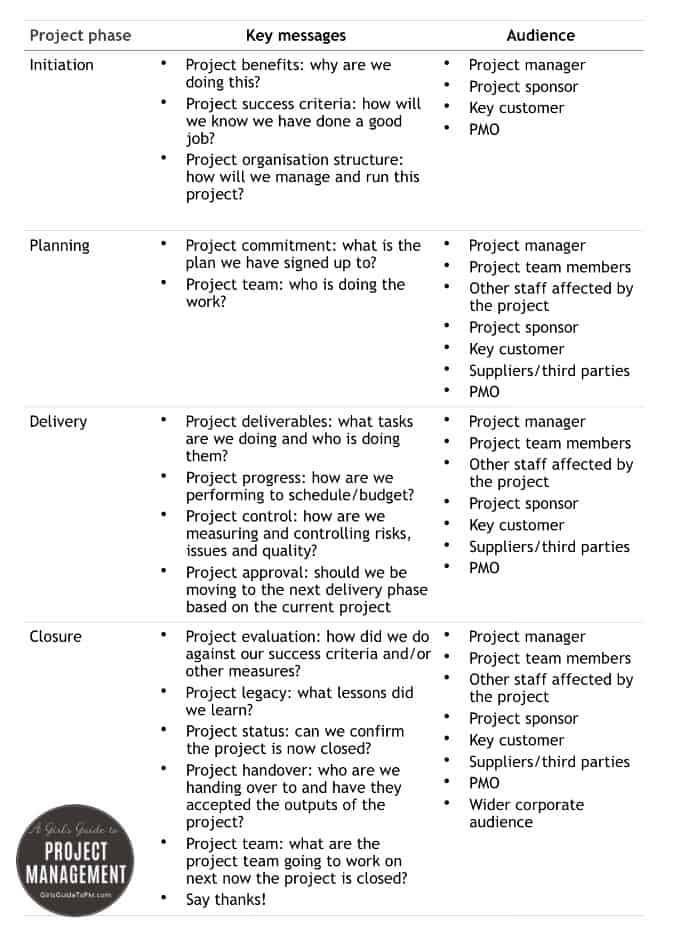How I Do It: Engaging Stakeholders
This blog is reader-supported. When you purchase something through an affiliate link on this site, I may earn some coffee money. Thanks! Learn more.
When I did my first project management course I was taught about ‘managing’ stakeholders. Today, the
It’s arrogant and naïve to think that you can ‘manage’ another person’s response to your project. Once you focus on reframing your experience with stakeholders as engaging them, then everything else seems…easier.
Having said that, there are still challenges. There always are. Below I’ve tried to explain how I manage the relationships with stakeholders on my projects, using questions that other people have asked me over the last few months.
How Do I Split Communication Time Between Stakeholders and The Team?
Someone asked me how I split my time between communicating with stakeholders and communicating with the team.
The team is stakeholders so I don’t think it’s easy to split the time out like that.
If you think of all the people involved as stakeholders, what they need to hear or receive changes as you go through the project lifecycle.
For example, you’ll communicate heavily with the sponsor and key customer and probably the PMO in the initiation phase, because the rest of the team might not be in place. The table below comes from my book, Collaboration Tools for Project Managers, and is what I keep in mind when I’m working with stakeholders throughout the project lifecycle.

If it isn’t me doing all the communication and engagement work then I try to be around for the team and provide informal and ad hoc mentoring as required. It shouldn’t be too onerous, and if you are a
How Do I Ensure Team Members Don’t Derail The Project?
Ha! Good luck with that one. If one of your stakeholders wants your project to fail then they’ll do their best to make that happen.
Having clear roles and responsibilities helps.
Setting objectives helps so that they know why they are getting involved in this work. A project leader who is charismatic and who has a clear vision that he or she is prepared to share with the team is also a huge bonus. If I don’t have someone in that role then I have to try to fill the gap myself.
Staying on top of task management and helping people prioritize can also stop people from derailing the project inadvertently. Being able to delegate tasks and giving people a complete, well-thought-out work package is also helpful, so I try to document and communicate as much as possible around what their particular effort is going to involve.
Then I try to set freedom of action boundaries so they know what they can approve or make decisions on and what needs to come back to me.
Read next: How to deal with challenging situations involving stakeholders
How Do I Stop Stakeholders From Waffling?
Another question I was asked is, “How do you stay firm with stakeholders so they don’t waffle about their requirements?”
I answer that one with another question: why is waffling bad?
People waffle because they don’t have the vocabulary to describe what they want in an articulate way.
If you want to keep the discussion short, set time limits, enforce strict protocols about sticking to the agenda, etc. but expect your requirements to be incomplete.
I find that part of managing stakeholders is letting them waffle. Yes, they go on a bit. Yes, they repeat themselves, about their requirements and anything else to do with the project. But relationship building doesn’t happen if you cut them off and give the impression that you aren’t interested.
I’m not a business analyst and while I might have had some useful analysis skills once upon a time in an earlier job I am now too impatient to do the requirements gathering with any degree of success.
Try to work with a good business analyst who can help with requirements, or if you aren’t in that kind of an environment, then involve the user in the design as much as possible so they can see what you are building.
Engaging stakeholders is an ongoing process and one that Phil Peplow and I wrote extensively about in our book, Customer-Centric Project Management. I am not perfect. I don’t run project reviews as often as I should, despite writing a book about it. In the real world sometimes you don’t have the luxury of doing what the textbooks tell you, although I try to work little parts of customer-centricity into my conversations with stakeholders all the time. The easiest way to do this is: “Is there anything else I can do for you right now?”
So that’s my take on engaging stakeholders. Don’t forget to enter your email in the box below and get your roles and responsibilities template! I’d love to hear if it makes a difference for you on your projects.
If you’re interested in a model to help assess a way to prioritize your engagement have a look at our post here where we discuss the stakeholder saliency model.
* That’s an affiliate link, but you won’t pay extra if you click to look at or buy the book.
